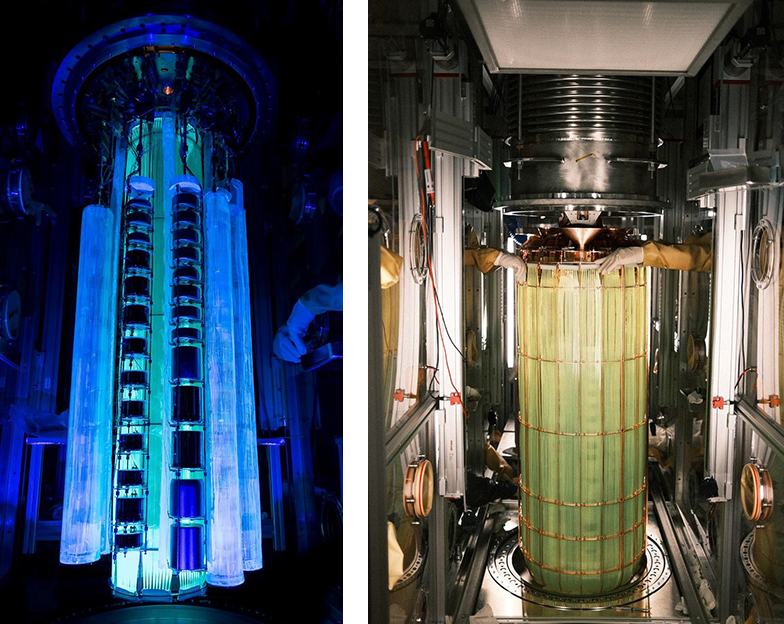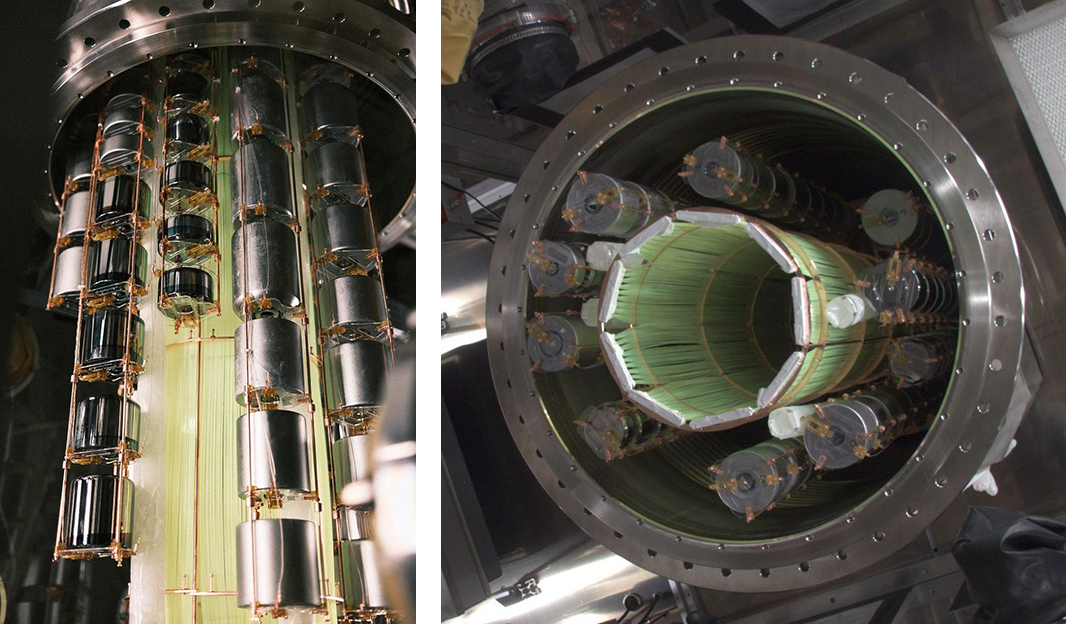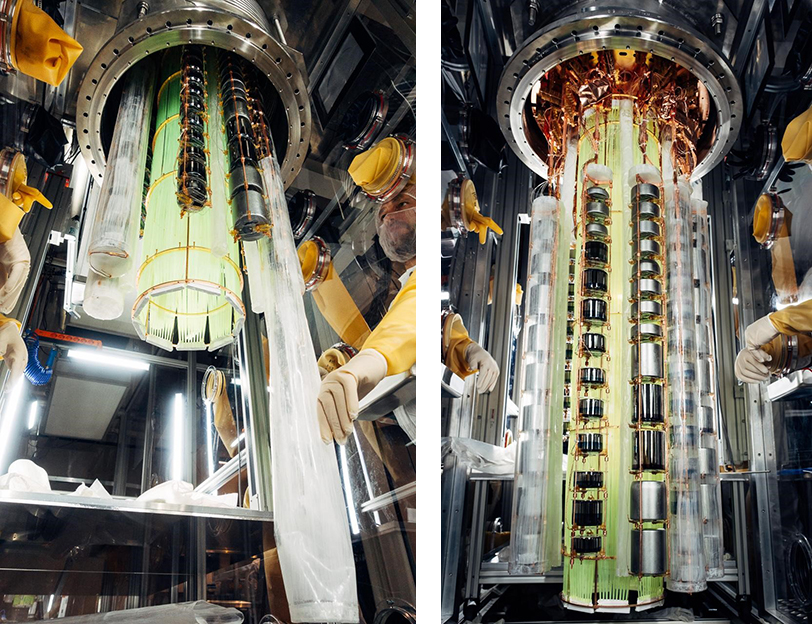More than hundred germanium detectors of LEGEND experiment installed with JINR participation
News, 02 December 2022
101 germanium detectors were installed in the LEGEND experiment in the Gran Sasso Laboratory in Italy. The mass of the enriched isotope Ge-76 exceeded 100 kg for the first time ever. The collaboration achieved such results with the active participation of the Laboratory of Nuclear Problems JINR staff members. The participants carried out the preparatory work necessary for a full-scale launch of the experiment.
The LEGEND experiment to search for neutrinoless double (0νββ) beta decay Ge-76 was launched this summer with four strings of germanium detectors (~ 60 kg) to assess the performance of all its elements: detectors, liquid argon instrumentation, electronics, DAQ, and analysis stream. The test result satisfied the collaboration, and in October, it was decided to stop the data taking. The setup was disassembled to prepare the full-scale LEGEND launch. To do this, it was necessary to add missing cables, mount all detector electronics, repair broken channels, and perform a number of other works.
A group of JINR scientists, arrived to Italy in autumn, took an active part in all stages of the work. Their role was decisive in solving several tasks. For example, researcher from the DLNP Experimental Department of Nuclear Spectroscopy and Radiochemistry (EDNSR) Nadezhda Rumyantseva in addition to tasks related to mounting detectors in holders and strings was responsible for the repair of failed light collection channels in the argon instrumentation, namely SiPM arrays.
“After the successful completion of preparatory works, we fully reassembled the setup with a much larger number of detectors,” Senior Researcher of EDNSR DLNP, JINR Group Leader in the LEGEND Project Konstantin Gusev noted. “During a week, a joint group of scientists assembled 10 enriched germanium detector strings. The nylon mini-shrouds, made by JINR specialists, were put on the strings, and then the outer part of the liquid argon instrumentation was installed.”
As a result, the number of germanium detectors installed in the experiment increased to 101 units. The mass of the enriched isotope Ge-76 exceeded 100 kg for the first time and amounted to ~140 kg. For comparison, in the final phase of the previous GERDA experiment, which set the best limit for the half-life of the neutrinoless double beta decay of 1026 years, only 41 detectors with a total mass of ~40 kg were measured. In another germanium project, MAJORANA, the total mass was about 30 kg. The LEGEND experiment uses detectors from GERDA (BEGe type) and MAJORANA (PPC type). In both cases, the detector mass does not exceed 1 kg. In LEGEND-200 a noticeable increase of the enriched isotope has been achieved by using innovative detectors of the ICPC type which weigh up to 4 kg and on average over 2 kg. In the second phase of the experiment, LEGEND-1000, it is planned to immerse only detectors of this type.
Next year, when the remaining detectors are made, they will be added to the setup to reach the target Ge-76 mass of 200 kg. After 5 years of data taking, it is planned to accomplish the desired LEGEND-200 neutrinoless double beta decay sensitivity of 1027 years.


